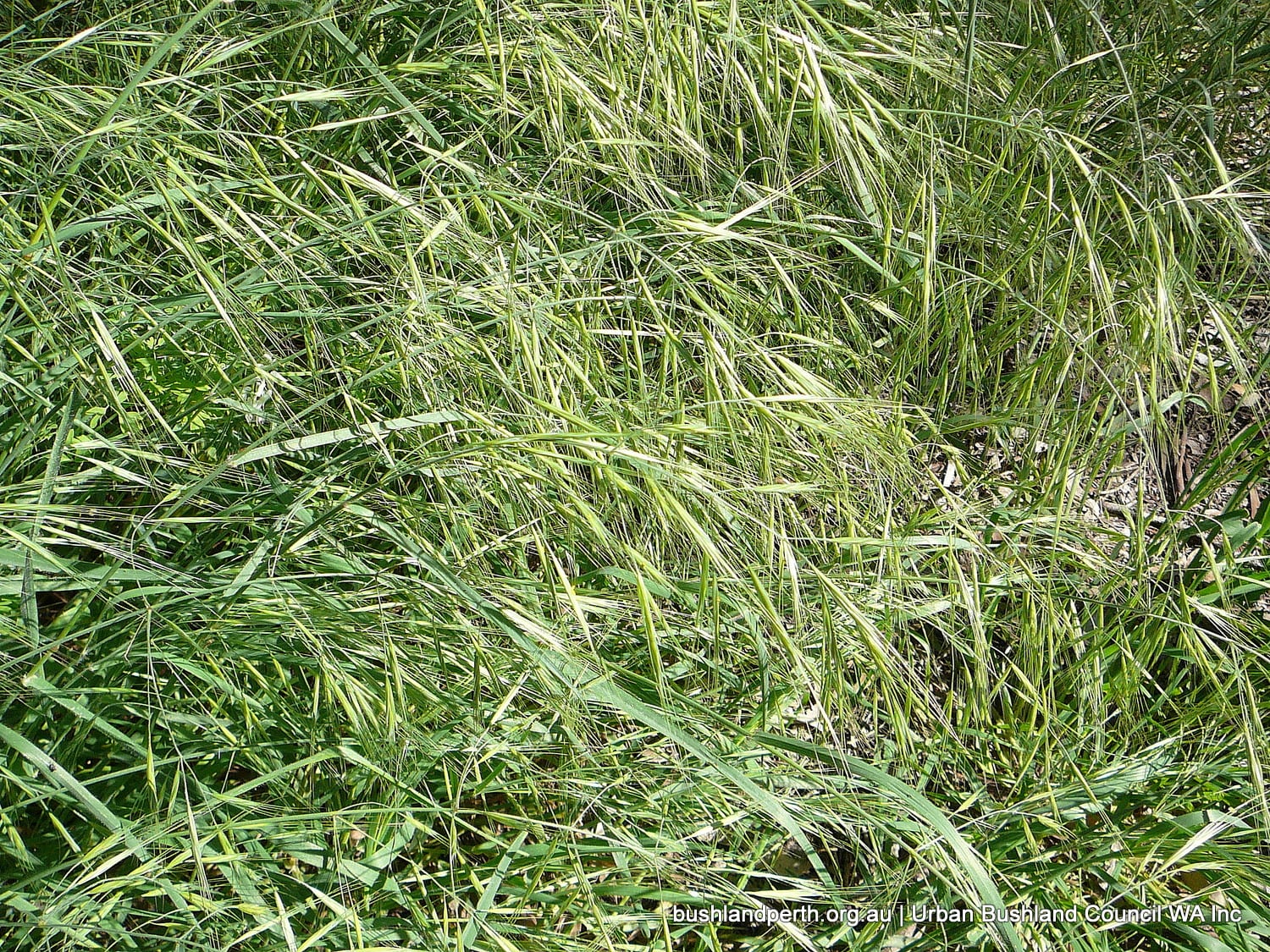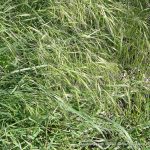Great Brome

Common name
Great Brome
Scientific Name
Bromus diandrus
Type of plant
Grasses (Family Poaceae)
About this weed
Originally from the Mediterranean Region, and similar to the native Bromus arenarius (Sand Brome) it was introduced into Australia circa 1875 as a contaminant of crop seeds or wool. It has now naturalised across southern Australia due to its aggressive spread and pre-adaptation to temperate Mediterranean climates.
Description
Great Brome is a tufted annual grass growing growing to 0.7 m high.It has soft hairy flat or loosely folded leaves. The inflorescence droops and the plant flowers in summer. This is drought tolerant weed that produces prolific seed and the seeds persist for up to 2 years. Seed remains dormant in high temperatures over summer but are highly germinable when conditions become suitable. Rainfall is the biggest determinant for germination. Most seed will germinate with first substantial rain in autumn and early winter. In dry starts to seasons, a greater proportion of the seeds show staggered germination which may continue until as late as August. Under increased nitrogen, seedlings emerge earlier at higher densities.
Impact on Bushland
It is highly competitive for water, nutrients and space and is adapted to a range of soil types from acidic to alkaline. A serious weed of offshore islands, pasture, crops, roadsides, granite rocks, wetlands.
Location
Found in the South-West Province in yellow, grey and black sand, loam and red/brown clay.
Priority for removal
High: a major threat to the conservation values of vegetation in areas where it has become established.
Management (hand)
Hand pull plants to prevent seed set. As this weed holds seeds well it can be hand pulled after the plant dies.
Management (herbicide)
In degraded areas use 1% Glyphosate on seedlings, young plants or when flowering. Alternatively spray plants at 3-5 leaf stage with Fusilade® Forte at 16 ml/10 L or 800 ml/ha (based on 500 L water/ha) + wetting agent or for generic fluazifop-p (212g/L active ingredient) 10ml/10L or 500ml/ha + wetting agent. An early and late application may be required where two Bromus species are present. Repeat the following year if required. Read the manufacturers’ labels and material safety data sheets before using herbicides. Optimal spraying should be done from June to August but occasionally spraying can also be done from September to November.
Flowering month/s
August, September, October, November
Flower colour/s
Green, Yellow, Purple, Cream
Information source
https://florabase.dpaw.wa.gov.au/browse/profile/249
Additional information
https://florabase.dpaw.wa.gov.au/weeds/swanweeds/list
Hussey, B.M.J., Keighery, G.J., Dodd, J., Lloyd, S.G. and Cousens, R.D. (2007) Western weeds. A guide to the weeds of Western Australia, Second Edition, The Weeds Society of Western Australia, Victoria Park, Western Australia.

